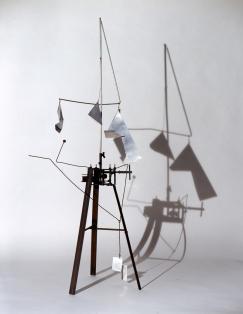
Bruno Munari (1907-1998)
Useless Machine (Arrhythmic Carousel), 1953 Iron structure, gramophone mechanism and aluminium sheets
113 x 60 x 30 cm
Private collection
BRUNO MUNARI My Futurist Past: a cura di Miroslava Hajek - in collaborazione con Luca Zaffarano e il Massimo & Sonia Cirulli Archive – la mostra di Munari a Londra, alla Estorick Collection of Modern Italian Art (MAPPA). Inaugurazione mercoledì 19 settembre. Resterà aperta fino al 23 dicembre 2012.
La mostra BRUNO MUNARI My Futurist Past, si pone l’obbiettivo di investigare l’attività di uno dei personaggi più complessi e creativi dell’arte italiana del XX secolo rivelando la richezza della gioiosa, irreverente ed infinitamente creativa carriera di Munari. Il catalogo che accompagna la mostra include testi oltre che dei curatori, di Pierpaolo Antonello (Università di Cambridge) e Jeffrey Schnapp (Università di Harvard) insieme ad un testo di Alberto Munari (Università di Padova).
L’esposizione analizza lo sviluppo dell’estetica di Bruno Munari, partendo dalla sua fase futurista iniziale (intorno al 1927), fino agli anni Cinquanta, quando, come uno dei fondatori del Movimento Arte Concreta, Munari divene un punto di riferimento per una nuova generazione di artisti italiani. Questa mostra illustra inoltre il modo in cui la ricerca di Munari, per certi versi pionieristica, ha esercitato un’influenza che si estende oltre la frontiera italiana.
Bruno Munari nasce a Milano nel 1907, dove vive e lavora fino al 1998, anno della sua morte. Inizia la sua carriera nelle file del movimento futurista, di cui era considerato da F. T Marinetti uno degli esponenti più promettenti. Fin dall’inizio della sua carriera Munari si concentra nell’esplorare la possibilità di rappresentare la pittura nello spazio tridimensionale attraverso il flusso continuo di forme, rese mutabili incorporando una dimensione temporale, in accordo con le teorie professate da Giacomo Balla e Fortunato Depero nel loro manifesto ‘Ricostruzione Futurista dell’Universo’. Munari descrive l’inizio della sua carriera come il suo ‘passato futurista’, e le ambiziose idee di questo movimento hanno certamente influenzato la sua caleidoscopica ricerca visiva, portandolo a lavorare con una gamma di tecniche diverse, fra cui la pittura, il fotomontaggio, la scultura, le arti grafiche, il cinema, esplorando anche la teoria dell’arte. Le influenze sul suo lavoro sono state molteplici, fra cui l’estetica e sensibilità di movimenti come il Construttivismo, Dada e il Surrealismo.

Bruno Munari (1907-1998)
Useless Machine, 1934
Pumpkin shell, wooden rods and aluminium
57 x 16 x 10 cm
Private collection
Nel 1930 Bruno Munari comincia a costruire le Macchine Inutili – i primi ‘mobile’ nella storia dell’arte italiana, il cui obbiettivo è liberare la pittura astratta dalla staticità del dipinto, utilizzando il principio di casualità introdotto dall’uso dell’aria come forza di movimento per le parti mobili sospese. Il paradosso del titolo rimanda ad una riflessione sull’utilità dell’inutile (l’arte) e sull’inutilità dell’utile (la macchina), operando un distinguo della propria poetica da una posizione futurista troppo legata al concetto di macchina roboante e di progresso acritico.
Nel 1946 espone a Parigi il primo ambiente spaziale denominato Concavo-convesso basato ancora una volta su un oggetto sospeso, realizzato con un rete metallica opportunamente curvata in modo da ricordare certe forme studiate dalla topologia, come il nastro di Moebius. Installato nella semi-oscurità, consente di generare, attraverso luci puntiformi, ombre e riverberi che rimandano ai moirè di certe pitture cinetiche degli anni Sessanta. Assieme all’ambiente spaziale nero con luci di Wood presentato da Lucio Fontana del 1949, il Concavo-convesso rappresenta una delle prime installazioni dell’arte moderna europea.
Durante gli anni Venti e Trenta, Bruno Munari ricopre la carica di art director della grafica di importanti riviste come L’ala d’Italia, La rivista illustrata del Popolo d’Italia, Natura, La Lettura, L’almanacco letterario Bompiani, Tempo e Domus, e per progetti pubblicitari di aziende come Campari, Snia Viscosa, Pirelli, Olivetti e Agip.
Verso la fine degli anni Quaranta, insieme con Atanasio Soldati, Gianni Monnet, Gillo Dorfles e altri, Munari fonda il M.A.C (Movimento Arte Concreta) a Milano. Questo movimento agisce da catalizzatore per l’astrazione Italiana, dando origine a ‘una sintesi delle arti’, in grado di offrire alla pittura tradizionale nuovi strumenti di comunicazione ed inoltre di dimostrare la possibilità di una convergenza, anche in un contesto industriale, fra arte e tecnica, creatività e funzionalità.
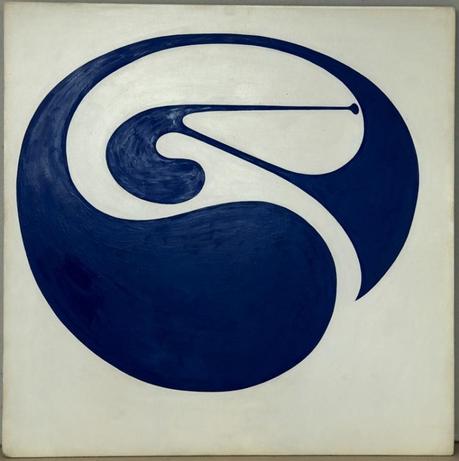
Bruno Munari (1907-1998)
Curved Negative-positive, 1950
Oil on board
50 x 50 cm
Private collection
(photograph Davide Biancorosso)
Durante gli anni Cinquanta, Munari crea la serie ‘Negativo-positivo’, composizioni astratte in cui il dualismo classico fra la figura e lo sfondo svanisce a causa di una percezione visiva resa instabile da una mancanza di un margine o bordo nella composizione. L’artista continua poi ad esplorare la nozione di dipingere con la luce, arrivando al processo di smaterializzare l’arte attraverso l’uso di proiezioni di diapositive contenenti composizioni intitolate Proiezioni Dirette. L’artista crea composizioni con materiali poveri o anche con frammenti di vetro colorato e plastica trasparente, elementi organici e fili di cotone, fermati fra due superfici di vetro. Le composizioni così create venivano proiettate, non solo al chiuso, ma anche all’esterno, sulle facciate di edifici, dandogli così una sensazione di monumentalità.
Nel 1951 Munari crea la serie di Macchine Aritmiche, i cui movimenti irregolari sono generati da meccanismi a molle usurate. Nel 1953 scopre, per la prima volta, come scomporre lo spettro di luce attraverso una lente Polaroid in un continuo dato dai movimenti rotanti di un filtro polarizzante applicato ad un proiettore per diapositive. Le Proiezioni Polarizzate nascono come continuazione logica e complemento teorico alle ricerche che hanno portato alla creazione delle sue Proiezioni Dirette.
Questa mostra prende spunto da queste ricerche pittoriche e teoretiche, e si concentra su due aspetti: uno artistico, in cui è analizzata la iniziale ma conflittuale relazione con il Futurismo; e uno che investiga il lavoro di grafica creato da Munari per le riviste più prestigiose dell’epoca, un lavoro che ha avuto un ruolo importante di modernizzazione della cultura italiana. Sarà inoltre presentata, per la prima volta nel Regno Unito, l’installazione di Concavo-convesso. L’esibizione sarà anche accompagnata da eventi all’aperto, con una proiezione polarizzata sulla facciata del museo.

The exhibition Bruno Munari: My Futurist Past, on view at the Estorick Collection of Modern Italian Art from 19 September to 23 December 2012, aims to investigate the activity of one of the most complex, creative and multi-faceted figures of Italian 20th century art. It will analyse Munari’s aesthetic development from his initial Futurist phase (around 1927) to the post-war period (up to 1950) when, as one of the founders of the Movimento Arte Concreta, he became a point of reference for a new generation of Italian artists. It will also illustrate how his pioneering work exerted an influence that stretched far beyond the borders of his native country.
Bruno Munari was born in Milan in 1907, and lived and worked there until 1998, the year of his death. He began his career within the Futurist movement and was considered by F. T. Marinetti to be one of its most promising young exponents. From the very beginning, he was concerned with exploring the possibility of representing painting spatially through a continuous flow of forms rendered mutable through the incorporation of a temporal dimension, in accordance with the theories of Giacomo Balla and Fortunato Depero in their 1915 Manifesto ‘Futurist Reconstruction of the Universe’. Munari described the roots of his work as his ‘Futurist past’, and the movement’s ambitious scope certainly informed his kaleidoscopic career, leading him to work across a range of media and disciplines from painting to photomontage, sculpture, graphics, film and art theory. Indeed, his influences were extremely varied, also reflecting the aesthetics and sensibilities of movements such as Constructivism, Dada, and Surrealism.
In 1930 he began designing his Useless Machines – the first ‘mobiles’ in the history of Italian art – the aim of which was to liberate abstract painting from its static nature by employing the principle of causality introduced by the use of air as a force of movement for the suspended parts. The paradoxical name was intended to be a reflection on the usefulness of the useless (art) and the uselessness of the useful (machines), creating a distinction between his personal aesthetic and that of ‘orthodox’ Futurism, with its fascination with roaring machinery and its uncritical attitude towards progress.
In Paris in 1946, he created his first spatial environment entitled Concave-convex, based once again around a hanging object made of metallic mesh carefully moulded in such a way as to recall certain forms studied in topology, such as the Möbius strip. This was installed in semi-darkness and illuminated by spotlights thereby generating shadows and reflections, many of which recall the moiré patterns of certain kinetic paintings of the 1960s. Along with the spatial environments of Lucio Fontana, the Concave-convex represents one of the first installations in the history of modern European art.
During the 1920s and ‘30s Munari acted as a consultant or art director for such important magazines as L’Ala d’Italia, La rivista illustrata del Popolo d’Italia, Natura, La lettura, L’almanacco letterario Bompiani, Tempo and Domus, and for the publicity projects of companies such as Campari, Snia Viscosa, Pirelli, Olivetti and Agip.
Towards the end of the 1940s, together with Atanasio Soldati, Gianni Monnet, Gillo Dorfles and others, Munari founded the M.A.C. (Movimento Arte Concreta or Concrete Art Movement) in Milan. This movement acted as a catalyst for Italian abstraction, giving rise to a ‘synthesis of arts’ capable of complementing traditional painting with new tools of communication and able to demonstrate the possibility of a convergence between art and technology, creativity and functionality, in an industrial context.
During the 1950s he created the series of Negative-positives, abstract compositions in which the classic dualism between the figure and the background vanishes due to a visual perception made unstable by the lack of an edge or boundaries within the composition. In 1950 he continued to explore the notion of painting with light, arriving at the process of dematerialising art through the use of projection slides in works known as Direct Projections. The artist created compositions with cheap materials or debris such as coloured and transparent plastic, organic elements and cotton threads, which were sandwiched between two glass surfaces. The compositions thus created were projected not only indoors but also outdoors, on the façades of buildings, giving them a feeling of monumentality.
In 1951 he created the series of Arrhythmic Machines, the irregular movements of which were generated through the use of springs. In 1953 he discovered, for the first time in history, how to break the light spectrum through a Polaroid lens in a continuum given by the rotating movement of a polarising filter applied to a slide projector. The Polaroid Projects were born as logical continuations of, and theoretical complements to, the research that led to the creation of his Direct Projections.
This exhibition takes as its starting point these pictorial and theoretical investigations and focuses on two aspects: an artistic one, in which the initial but conflicting relationship with Futurism is investigated; and a second one which, through sketches, graphic illustrations and advertisements, investigates Munari’s independent work as a graphic designer for the leading magazines of the day, contributing greatly to the modernisation of Italian culture. It also presents for the first time in the UK the Concave-convex installation, both in the context of the great importance this work had for Munari’s individual development, and its significance as a precursor of the many spatial experiments and installations created over the following years. The exhibition will also be accompanied by outdoor events involving examples of polarised projection on the façade of the museum.
Curated by Miroslava Hajek in collaboration with Luca Zaffarano and the Massimo & Sonia Cirulli Archive, this exhibition will reveal the full richness of Munari’s playful, irreverent and endlessly creative career. The accompanying catalogue will include scholarly texts by Pierpaolo Antonello (University of Cambridge) and Jeffrey Schnapp (Harvard University) as well as a text by Alberto Munari (University of Padua).
Venue:
Estorick Collection of Modern Italian Art, 39a Canonbury Square, London, N1 2AN, UNITED KINGDOM
Opens:
Wednesday 19 September 2012
Closes:
Sunday 23 December 2012
Summary:
The exhibition Bruno Munari: My Futurist Past, on view at the Estorick Collection of Modern Italian Art from 19 September to 23 December 2012, aims to investigate the activity of one of the most complex, creative and multi-faceted figures of Italian 20th century art. It will analyse Munari’s aesthetic development from his initial Futurist phase (around 1927) to the post-war period (up to 1950) when, as one of the founders of the Movimento Arte Concreta, he became a point of reference for a new generation of Italian artists. It will also illustrate how his pioneering work exerted an influence that stretched far beyond the borders of his native country.
Opening Times:
Wednesday to Saturday 11.00 to 18.00 hours. Sunday 12.00 to 17.00 hours
Late night opening the first Thursday of the month until 21.00 hours
Closed Mondays and Tuesdays
Shop: open gallery hours. Library: by appointment only
Admission Prices:
£5.00, concessions £3.50, includes permanent collection and temporary exhibitions
Free to under-16s and students on production of a valid NUS card
Library, by appointment only, £2.50 per visit
Catalogue:
The exhibition will be accompanied by a fully-illustrated catalogue.
Public Transport:
Victoria Line, Overground and First Capital Connect to Highbury & Islington; First Capital Connect to Essex Road; buses: 271 to door; 4, 19, 30, and 43 to Upper Street/Canonbury Lane; 38, 56, 73 and 341 to Essex Rd/Canonbury Road
Accessibility:
Main entrance in Canonbury Road. Wheelchair access to galleries 1 to 4, café, shop and toilets. Limited car parking for blue badge holders (please telephone in advance). Induction loop in gallery 2.
Parking:
Car parking for blue badge holders only.
MAE Milano Arte Expo ringrazia Miroslava Hajek (LINK) per il testo italiano e Annie Roper – Sue Bond Public Relations per le immagini delle opere di Bruno Munari cortesemente inviate.
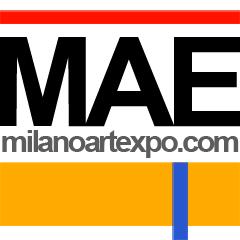
-

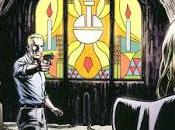

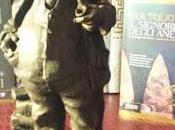
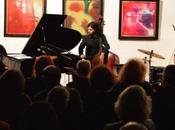



COMMENTI (1)
Inviato il 29 agosto a 17:53
Arte scultura di Munari in movimento..basta sfiorala e molte sculture si mettono a muoversi spontaneamente vera Arte Morando Sergio.